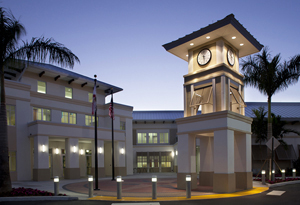At Wellington’s Planning, Zoning & Adjustment Board meeting on Thursday, Oct. 10, Senior Planner Kelly Ferraiolo presented an update to the village’s sign code ordinance.
Staff recommended the approval of an ordinance to amend the sign code in Article 7 of Wellington’s Land Development Regulations.
Article 7 was 100 pages but rewriting it has reduced the proposed document to 59 pages. The changes include getting rid of duplications, simplifying the text, eliminating obsolete references and reordering the information in a logical manner.
The sign regulations were also carefully modified to comply with a recent U.S. Supreme Court decision and statutory regulations related to context neutrality and branding.
“As you are aware, staff is rewriting the land development regulations,” Ferraiolo said. “The board has seen almost all of them except [articles] 6 and 3, which are being drafted by staff. All of the articles, as of now, have completed first reading before the Wellington Village Council.”
The sign code change revisits a portion of the regulations reviewed last year.
“The sign code is part of Article 7, which this board approved in September 2018,” Ferraiolo explained. “Since then, there has been some court rulings and some state statutes that have come about. This is more like a cleanup to make sure we are in compliance with those rulings and statutes.”
Because of recent federal court rulings in relation to signage and freedom of speech, Wellington’s legal department had to review proposed changes to make modifications to ensure the sign code was not in conflict with these rulings.
Several recent federal court rulings related to signage and freedom of speech have come about due to the 2015 Supreme Court case Reed v. Town of Gilbert.
In 2005, the Town of Gilbert, Arizona, adopted a municipal sign ordinance which restricted how signs could be displayed in public areas. Clyde Reed, the pastor of Good News Community Church, sued the town and eventually the Supreme Court heard the case. It held that a municipal ordinance that places stricter limitations on the size and placement of religious signs than other types of signs is an unconstitutional content-based restriction of speech.
Wellington has analyzed this case, and related cases that followed, and looked at the model sign code put out by the International Municipal Lawyers Association, which developed a cohesive model sign code that different municipalities use to adapt to their different jurisdictions.
The village took the code that was approved last year and modified it based on the court cases and the model sign code to make sure it is content-neutral and in compliance. This limits any exposure to free-speech constitutional claims.
Development Review Coordinator Cory Cramer noted the legal issues when explaining why this latest change is being made.
“Article 7 contains more information than just the sign code,” Cramer explained. “However, we took Article 7 to the council several months back, and since that time, there was some case law that our legal department reviewed and determined that we should make some changes to the sign regulations to make sure we are conforming to content-neutral language.”
Assistant Village Attorney Rachel Bausch described the process of updating the Land Development Regulations.
“We are in the middle of doing an overhaul of our entire Land Development Regulations,” Bausch told the Town-Crier. “The sign code was amended as part of our rewrite of Article 7. This actually went to the planning and zoning board last year and the council for first reading. However, we brought just this portion of Article 7, the sign code, back to the board, and it will now go back to the council. We wanted to make sure that part of our code rewrite does not hold us to any liability.”
Sign regulations in the ordinance encompass aesthetic qualities in design, location, size and purpose, but it also doesn’t allow signs to obstruct views or distract motorists. In Chapter 9 of Article 7, the sign code revisions intend to make a more complete and concise overview of these regulations.
A motion to adopt these latest changes to Article 7 was approved unanimously by the board.








